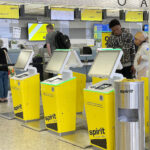We’ve been thinking a lot about microschools across the United States over the last few years, and certainly, they’ve garnered a lot of media attention. Certain policy moves and philanthropic attention have increased opportunities to reimagine the microschools that exist in the country and to launch hundreds of new microschools in both the public and private sectors.
So for us, we define microschools with a big tent. We think about microschools as small learning environments with typically less than 150 students that offer personalized and student-centered learning experiences. And we’ve been focusing mostly on microschools in the United States. Today, we want to take a pause and think more globally.
When we think globally about education, a couple of big things matter here. Net enrollment in primary schools worldwide has increased from 72 percent in 1970 to almost 90 percent in 2018. These are really big strides, but still, 250 million children remain out of school.
These are students who could be attending school but are unable to for a variety of reasons. Most of these out-of-school children are in rural areas. They’re less likely to finish primary school or transition to secondary school. They often score worse on tests.
And ultimately, this translates to lower incomes and life outcomes. While violence and poverty can be primary drivers, often these students live in education deserts—places where it’s hard to access school because it’s too far to walk, there’s no transportation, or environmental factors play a role.
I sat down to chat with Mohammed Rezwan, who has actually done something about this. He has spent over 20 years increasing school access for Bangladeshi students through a floating school program. Really, microschools in every sense of the word, except that they’re on rivers.
Given the large-scale climate change challenges and the flood danger that 60 percent of Bangladeshi citizens are impacted by, this is a real solution to a real challenge that has a massive impact. Students deserve to keep learning, and Mohammed is tackling that challenge.
Introduction and Bangladesh Background
Nate McClennen: So, let’s start off with the big picture: a little bit about the context of the opportunities and challenges in Bangladesh as a country, and the education system in general, just to give our listeners who are more U.S.-centric some idea of the context.
Mohammed Rezwan: Bangladesh is a low-lying delta, and 46 percent of the population here lives within 10 meters above sea level, and another 33 percent live within 5 meters. So, when the monsoon season starts, which is in June every year, a lot of water comes from the melting glaciers of the Himalayas. We have a network of thousands of rivers, canals, and wetlands, but our river system cannot hold that much water.
It overflows, and we get flooding every year. This is a country where one-fifth of the country’s area is water. When the flood comes, then another one-fifth goes underwater. When the big floods come, then two-thirds of the country goes underwater. The floods not only destroy crops and educational institutions, but they also prevent people from getting basic services.
Education and income-generating activities in rural areas become a big challenge. During the monsoon season, 750,000 children are affected; their education gets impacted by the flooding. Right now, we have more than 4 million children out of school.
Because of COVID-19, 20,000 schools were closed. Bangladesh had one of the longest school closures in the world. This is the situation in Bangladesh. In the remotest areas, it becomes very difficult to build schools because if you build schools, they are going to be destroyed.
So the only education option in such areas is the floating schools.
Nate McClennen: Sounds like a huge challenge. How did you come up with the original idea for the floating schools? You’re, I think, an architect by training. So how did this solution come about? What was the first idea?
Mohammed Rezwan: I was born and grew up in one of the riverside communities where we are working. When I was a child, it was a challenge for every child there, and it still is in rural, flood-prone areas. When the floods come, then all the areas go underwater. If you have a boat, that can ensure you go to school.
Our family-owned a boat that helped me go to school, but I saw many of my friends and relatives who could not go to school. And I always thought that I should do something for my community in the rural areas. In Bangladesh, there are traditional floating gardens in southern Bangladesh that have been there for more than 400 years.
Farmers there go to floating markets on boats. They sell and buy vegetables there.
These two things inspired me: if water can be a challenge, then at the same time, we can make solutions using the waterways. We can use boats, we can create floating spaces that can ensure schooling for the children.
As I studied architecture, it was easy for me to think of the floating space. Bangladesh is a country where we not only have flooding but also cyclones. Every year, we get one or two cyclones. Sometimes there are big cyclones. This country’s people never give up. After every big cyclone and flood, they stand up again, prepare themselves, rebuild the community, and prepare for the next big natural disaster.
There are strong resilience qualities here. I thought that if I could connect these people with new knowledge and resources, they could do wonderful things. Taking inspiration from floating gardens and floating markets, all these things actually helped me design floating schools.
In 2002, we introduced the first school boat. It was not only a new solution for bringing school to flood-prone areas but also a new concept globally, and it was not easy at the beginning. There were a lot of challenges. Communities were skeptical. So, on day one of introducing the floating school, we got one student. Within a week, we got a few more, and eventually, we got 30 students. They came one by one. Their parents saw the impact because in the rural areas, parents are much more concerned about the safety of girls. If the girls need to travel a long way to go to school, the parents are not encouraged to send them to school. In our case, they can watch and see the girls getting an education at their doorsteps.
It saves time because these children have their parents in the fields, so they do not need to walk a long way. They can get an education at their doorsteps. When they saw that this floating school, this floating space, can bring benefits not only to their children but to the whole family, it created the demand in the rural community for more floating schools. We introduced more boats and provided information and skills training. We introduced libraries on bigger boats and floating training centers with multimedia equipment.
All these boats are powered by solar energy, and we decided to share the surplus energy with the community. We introduced solar lanterns. We recycled the traditional lantern into solar. There was a need for healthcare facilities in the rural communities. I designed floating health clinics.
We found that the traditional floating garden doesn’t work in northern parts of Bangladesh. I designed a new floating structure that has floating decks, a vegetable garden, and fish enclosures—all on water—three types of income-generating activities for the landless people. Because in Bangladesh, half of the population is landless, and more than 30 percent of people live below the poverty line.
It helps people grow traditional varieties of crops. In that way, a family can save money for the future education of the children, and they can take better care of the children. So it’s an integrated development approach that helps not only the children but the full family and the whole community.
It helps them prepare for present challenges like flooding. At the same time, it helps them get better preparation for future big floods. The Intergovernmental Panel on Climate Change predicted that by 2050, 16 percent of Bangladesh’s land may go underwater, resulting in 20 million climate refugees.
Another organization in the U.S., Climate Central, says that it would not take that long. It can happen very quickly within the next six years. It means that by 2030, around 40 percent of the land can permanently go underwater. So this is the situation in Bangladesh.
And then India has built fences all along the border with Bangladesh. So these Bangladeshi people must have their own solution to stay on this land of water.
A Closer Look at the Model (and the Boats)
Nate McClennen: Yeah, so amazing solutions. Let’s think a little bit about the resilience and thoughtfulness of the Bangladeshi people.
In the United States, we call it wraparound services. This idea that it’s not just a school but all the things that go along with it: income generation for agriculture, healthcare needs, adult skills, and upskilling. Can you describe, because we don’t have any floating schools in the United States, maybe a few schools on boats, how big these boats are? How many students study on them? And what does a day look like? You said that their parents can see them getting an education on the boat. So how does the system work? How big are the boats? How many kids? And what does a day look like on any particular boat?
Mohammed Rezwan: In rural Bangladesh, boats are built with wood and bamboo. All the materials are sourced locally, and the local people build the boats with their indigenous or traditional knowledge of boat building. I thought of using that knowledge, local labor, and materials. I know that if we design boats and create space with all these locally found resources, then it will help this project sustain for a long time. The community will be able to manage it. It will not be a new thing to them. It will be built by themselves, maintained by themselves, and operated by themselves because the boatmen, the teachers, and the boat builders are all from the same community. So it will create a strong relationship.
That’s why we used the traditional or indigenous knowledge of boat building. These boats are bigger than traditional boats. The floating school or school boat is 55 feet long and 11 feet wide. But the bigger boats are 65 feet by 13 feet.
These are made with bamboo, wood, and different types of materials sourced locally. These boats have flat bottoms so that they can easily travel through the flooded lands. We have wooden floors, inclined bamboo-strip walls, side-high windows, and the roof is placed at a height so that you can easily walk through.
There are no columns or posts inside the interior. When you enter the boat, you will find open space with seating arrangements. The boat has a big cabin that can fit 30 students with seating arrangements, a computer with internet access, and it is powered by solar energy. Some boats have a small room used as a library, but in a school boat, we have a book library.
Within the classroom, a boatman is responsible for looking after and running the boat. On each school boat, we have 30 students per class or session. The school boat works as a combination of a school bus and a schoolhouse. It collects students from different riverside areas or stations or villages, docks at the last destination, and arranges classes on the boat. After the class, it drops students off at the same places. In this way, our school boat works throughout the day, arranging three classes, each with 30 students, for a total of 90 students per school boat.
It works six days a week and provides education up to grade five. These children come from landless families, where it is normally a challenge to get three meals a day. The house condition is very poor, and these are flood-prone villages. When the water comes during the monsoon, these families or communities are affected by the floods.
On the school boat, we have to follow the government curriculum. At the same time, we have our own environmental curriculum. I not only designed the school boat, but as an architect, I also write school books for the children. We have an environmental curriculum that focuses on biodiversity, protecting the environment, and informing children about the sources of pollution so that they can share the information with their families and communities.
The children graduating from the floating schools can stay in touch with education through our floating libraries, where we provide training on computers and have 1,500 books. We also have training centers where girls and women can get training on new skills so that they can generate income and delay their marriage in the community.
We have boys’ and girls’ clubs that work together in preventing early marriage in the community because Bangladesh ranks number four in terms of early marriage, with one-third of the girls getting married before the age of 15. Early marriage is one of the challenges, and our work addresses this challenge.
Nate McClennen: So great context and very helpful. I think in my head I can understand what’s happening. I understand that the boats do three classes of 30 students a day. They’re teaching a national curriculum, but they’re also teaching a very context-specific curriculum that you’ve designed around rivers and environmental situations and conditions.
Right now, how many floating schools are there? Have you been able to measure the impact? How many students have been served? What’s the difference in these lives? You’ve been at it for 20 years, so it’s a long time. How do you measure success? And then how many floating schools are there?
Mohammed Rezwan: At our organization, we have 26 school boats working in districts in northwestern Bangladesh, reaching around 2,340 children a year. Our work has inspired other organizations over the last 12 years. Communities within Bangladesh and outside of Bangladesh—in Indonesia, Vietnam, Cambodia, the Philippines, India, Pakistan, and countries in Africa—have taken our idea of floating schools. They have built floating schools. So far, I think in total, more than a few hundred floating schools are floating through rivers, canals, and wetlands in these eight countries globally.
We also have two floating playgrounds. These are educational boats with two tiers. On the lower deck, we have a classroom that is also used as a training facility. I designed circular seating arrangements to create more interaction between the teacher and students and to accommodate more students in the limited space.
On the lower deck, we also have a library, books, and computers. On the upper deck, we have a playground with monkey bars and swings. On the side of the boat, we have slides. The children slide down from the upper deck to the lower deck. This means a lot to them. There is an observation deck on the top of the boat where children can have a bird’s-eye view of the community.
It creates strong interest among them in nature and science.
This educational playground supports our floating schools and the children in the community. It has been a wonderful space for them to spend time since the beginning. We introduced the first school boat back in 2002.
Over all these years, we have reached around 25,000 children, and around 22,500 children have graduated from floating schools. Seventeen percent of them are involved in different types of jobs in cities and towns. The rest of them are having very good lives in the rural communities.
They are involved with small businesses or agriculture in their communities. I can tell you one story. I got a national award in Dhaka. At the award ceremony, one young man came to me with a camera because he was a photographer at that event.
He told me that he was one of the students of our floating schools. The children studying in the floating schools are not only working as photographers; they are working in online data entry. They have been working in different sectors.
Nate McClennen: That’s amazing. That’s a pretty big impact: 25,000 children, 22,500 who have graduated from the floating schools. This is an amazing project. It’s probably taken an incredible amount of energy and a great team. You probably don’t sleep very much thinking about it.
What’s next for you? Do you want to keep adding more floating schools, or what are your next big ideas? Because clearly, you’re always creating and building something. So what’s next for you?
What’s Next for Floating Schools?
Mohammed Rezwan: At present, throughout different types of activities—schools, libraries, training centers, health clinics—we are directly reaching 75,000 people a year, and another 75,000 are indirectly impacted. So 150,000 people are benefiting from our services right now. We want to double that beneficiary reach and move to more remote communities throughout the country.
We have a plan to introduce another 35 boats over the next five years. At the same time, we can see the strong impact of climate change in other communities globally. For example, we got a call from Papua New Guinea. In Papua New Guinea, many communities don’t have access to education. Children cannot go to school. They do not have all the necessary support they need. When I talked to a community member there, I thought that we should go there. So in the future, we have a plan. We want to help these communities globally so that they can design and build their own school boats.
It will be a customized school boat considering the context and needs of that community. We are working on strategies to help communities around the world that are at the front of climate change. These are some of the priorities. We are still working on the floating gardens. Recently, we introduced a housing unit with the floating garden to see how that can help shelter people and their goats and other things during the monsoon season. We have a strong focus on building strong floating communities that can help people live on this land of water when part of Bangladesh is flooded.
Nate McClennen: That’s amazing. I appreciate the vision. I love the idea of how to replicate it in other countries. It sounds like that’s already happening, and you have visions of how it can happen even more. I want to wrap up by summarizing some things that I’ve learned from you, and I’m grateful for your time today.
One thing, and I think it’s important for our listeners to understand, is the scale that you’re working at. Often in the United States, microschools are small, with 15 to 20 students, but we’re thinking about how they can have a larger impact. You are a great example of that happening. A couple of takeaways for me are, first, the idea that one boat you started back in 2002 has now had a global impact. Small things can turn into big things. I love the idea of wraparound services—thinking not only about the students but also their families and livelihoods. Whether it’s through gardens, healthcare, upskilling, training, shelter, or playgrounds, all these pieces are important as the country becomes more and more underwater for parts of the year.
The third takeaway is the power of local employment and local agencies. You’re using local boat drivers, local boat-building techniques, and local teachers. How do we get local communities to own the project?
I also love the idea of curriculum based on the rivers. I’m interested in how we help students understand their places better so they can take better care of those places. Finally, the idea of scale is important for those of us in the business of trying to make the world a better place. It feels like you and your organization have started to think about how to take this idea from Bangladesh and replicate it in other places. Those are my takeaways from today. Thank you, Mohammed!
The post Floating Microschools: Adaptive and Mobile Learning Environments appeared first on Getting Smart.
Mohammed Rezwan talks about microschools globally, and how he used rafts to solve the education accessibility dilemma in Bangladesh.
The post Floating Microschools: Adaptive and Mobile Learning Environments appeared first on Getting Smart. Equity & Access, Climate, community, Equity and access, Microschools, new learning models, School design Getting Smart







